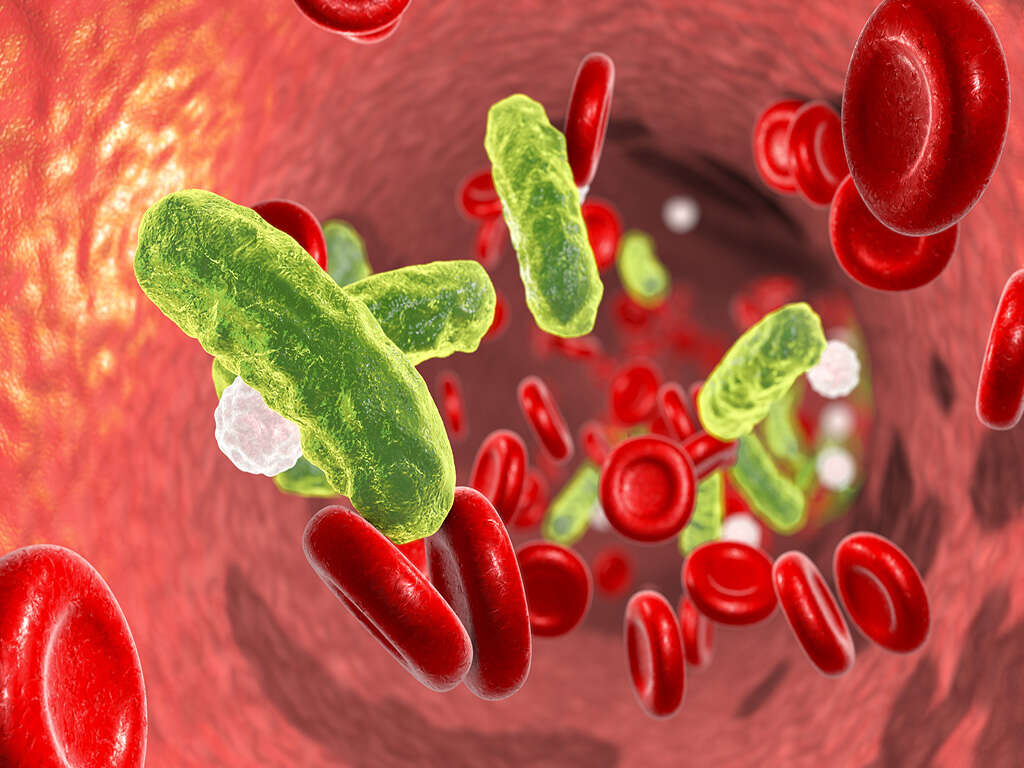10 Causes of Sepsis
Sepsis is a serious and potentially life-threatening complication of an infection. It is caused by the body’s response to an infection. Normally, our immune system protects us from various diseases and illnesses that we get during our lifetime. However, this immune system can also go into overdrive as a response to an infection, which is what happens in cases of sepsis.
Septic shock is the most severe type of sepsis. This is a real medical emergency that requires immediate medical help. Despite the treatment, the outlook and prognosis of sepsis, and especially of septic shock, is very poor. Infants and young children, elderly people, those with a compromised immune system, as well as those suffering from chronic medical conditions, are more likely to develop sepsis.
It can affect anyone at any age. For this reason, it is very important to know what causes it and how to recognize the signs and symptoms before it becomes too late. Below are 10 causes of sepsis.

Cause #1: Pneumonia
Pneumonia is an infection of one or both lungs that can be caused by bacteria, viruses, or fungi. It can be mild, moderate, and severe, but also pneumonia when not diagnosed or treated on time it can be life-threatening. Common signs and symptoms of pneumonia that you should be aware of are fever and chills, excessive sweating, coughing, chest pain, and shortness of breath.
One of the possible complications of severe pneumonia is sepsis, which is a life-threatening condition. Those with underlying chronic diseases, antibiotic pretreatment, as well as those who are hospitalized for a prolonged period of time, have an increased risk of developing sepsis. Treatment in these cases should be started as soon as possible and it is empiric initially while waiting for the results of microbiological cultures.

Cause #2: Urinary Tract Infections
Another possible cause of sepsis is a urinary tract infection (UTI), both urinary infections of the lower part and the upper part of the urinary system. Possible signs and symptoms of UTIs include frequent need to urinate, a burning sensation and pain while urinating, a sudden and extreme urge to pass the urine, a feeling of not emptying the bladder completely, a feeling of pressure in the lower abdomen, pain in the lower flank, fatigue, nausea and vomiting, and fever.
Treating UTIs is easy when diagnosed on time. However, despite the treatment, UTIs tent to reoccur. If UTIs are not treated correctly they can progress and lead to permanent kidney damage and even kidney failure. Another possible complication of severe UTIs is sepsis or the presence of bacteria in the blood.

Cause #3: Appendicitis
Appendicitis is an inflammation of the appendix. If this occurs, surgical removal is needed. The procedure is medically known as an appendectomy. Signs and symptoms of appendicitis that you should be aware of include, constipation or diarrhea, loss of appetite, nausea and vomiting, dull or achy pain around the navel, which as the hours pass turns into a sharp pain located on the lower right portion of the abdomen, and low fever.
A ruptured appendix is a very serious and life-threatening condition as if not diagnosed and treated on time it can lead to peritonitis. Peritonitis quickly spreads and leads to septicemia, otherwise known as the presence of bacteria in the blood. Sepsis develops shortly afterward as a response of the body to the presence of microorganisms in the blood. This inflammatory response that is triggered quickly leads to sepsis and septic shock. Sepsis can also develop as a complication of an appendectomy.

Cause #4: Osteomyelitis
Osteomyelitis is an inflammation of the bones. The infection can spread from any other body part to the bones, or it can start in the bone itself, usually following an injury. Even though it can occur at any age, osteomyelitis is more common in younger children.
It can affect any bone in the human body, even though the humerus or the femur are most affected. If the infection spreads to the bloodstream, sepsis and septic shock can develop.

Cause #5: Peritonitis
Peritonitis is the inflammation of the abdominal cavity like the appendix, fallopian tubes, and kidneys. The infection can originate from any organ within the abdominal cavity. Signs and symptoms of peritonitis include nausea and vomiting, diarrhea, dehydration, fever, and abdominal pain. Peritonitis can be either localized, which means that it affects only a certain part of the peritoneum, or generalized, which means that the entire peritoneum of the abdominal cavity is affected.
Peritonitis, regardless if it is localized or generalized, is a medical emergency and should be treated as soon as possible. However, diagnosing peritonitis is a real challenge sometimes. If left untreated, or if the treatment is started too late, peritonitis can proceed to sepsis.

Cause #6: Meningitis and Encephalitis
Meningitis and encephalitis are infections affecting the brain and the spinal cord. These diseases can lead to a wide range of symptoms like headaches, fever, seizures, and confusion. Bacteria, viruses, fungi, or parasites can cause them. Meningitis is the inflammation of the membranes surrounding the brain and the spinal cord, otherwise known as the meninges, while encephalitis is the inflammation of the brain itself.
Both meningitis and encephalitis are serious medical conditions that require prompt medical treatment. Sepsis is a possible complication of these two medical conditions. They can develop very quickly and kill in just a couple of hours. Even if a person manages to survive these life-threatening conditions, there is a great possibility of ending with serious brain damage, loss of vision, and loss of hearing. Babies and toddlers are most at risk.

Cause #7: Endocarditis
Infective endocarditis is an infection of the endocardium or the lining of the heart. Usually, the heart valves are affected as well. Endocarditis can be either acute or subacute. Acute endocarditis starts with high fever, fatigue, fast heart rate, and quick damage of the heart valves.
On the other hand, the onset of subacute endocarditis is a little bit slower and possible signs and symptoms include mild fever, fatigue, weight loss, sweating, and moderate heart rate. In cases when bacteria enter the bloodstream, sepsis can develop, quickly leading to septic shock and even death.

Cause #8: Wounds and Burns
Did you know that any infection in the human body can lead to sepsis?, even a simple wound or burn. However, certain risk factors increase the risk of sepsis such as having a chronic and severe disease like diabetes, kidney disease, liver disease, heart disease, malnutrition, major trauma, severe burns, severe wounds, alcohol abuse, intravenous drug use, antibiotic use long-term, immune suppression therapy, and HIV/AIDS.
The best way to treat sepsis is to prevent it from occurring in the first place by taking good care of your own health and body and with getting prompt treatment for any medical condition or injury, even for simple wounds or burns.

Cause #9: Hospital Acquired Infections
Hospital-acquired infections, otherwise known as nosocomial infections, are those infections that a person gets while being hospitalized for another medical condition. The healthcare staff can spread the infection as well, in addition to air droplets and contaminated equipment.
The problem with these infections is that the microorganisms, usually bacteria, that are causing them are resistant to most of the antibiotics, which makes their treatment very difficult. If the infection spreads to the bloodstream, sepsis will develop. Sepsis is a real challenge for hospitals worldwide today as it is one of the leading causes of death.

Cause #10: No Cause Can Be Identified
Sepsis is a serious and life-threatening medical condition which has rapid progress and often its progress is not predictable. It can be caused by bacteria, fungi, and viruses, even though bacteria are the most common cause.
In certain cases, the source of the infection is not identifiable, which of course makes its management even more difficult.









